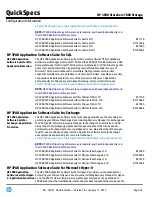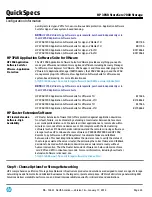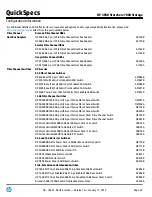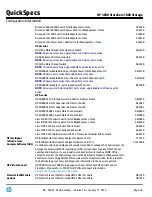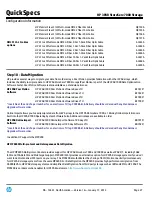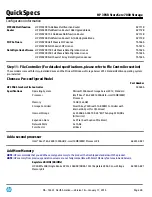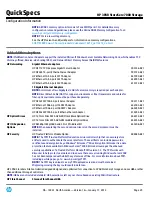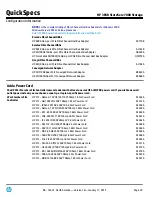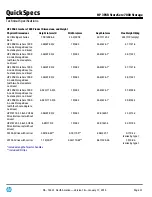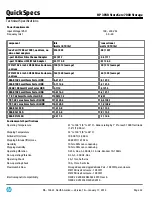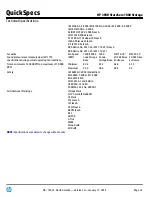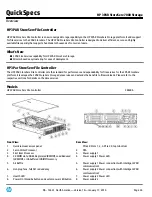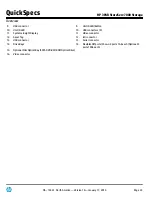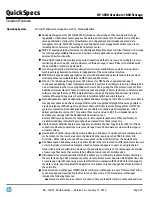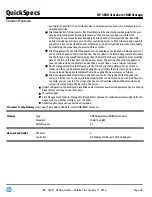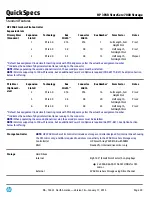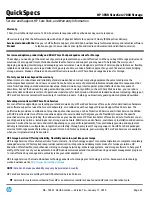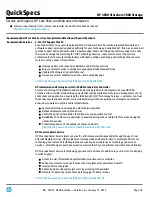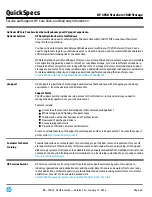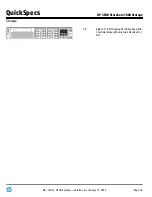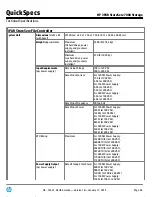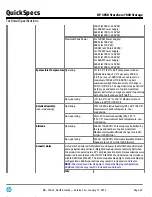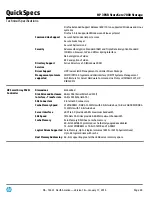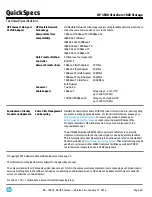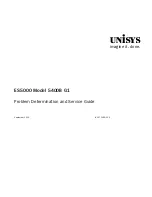
Operating System
Microsoft Windows Storage Server 2012, Standard Edition
Windows Storage Server 2012 (WSS2012) includes a robust range of file serving and storage
capabilities. It addresses heterogeneous file workload environments and enables more efficient
storage utilization. It allows for a flexible mix of configurations and includes advanced data
management tools. WSS2012 leverages your Windows Server management skill sets and tools
including Active Directory, PowerShell and System Center.
SMB 3.0: Leverage high performance continually available file shares to deliver feature-rich storage
for continuously available file services, business-critical applications and virtual servers using
advanced new functionality.
New VHDX Standard: Deploy larger capacity virtual storage that can grow to 16 terabytes, is more
resilient against corruption, and provides more efficient usage of new 4 KB sector hard disks with
the new VHDX virtual storage standard.
Live Storage Migration: Maintain maximized service-level availability even while moving virtual
machine storage between host servers independent of the actual virtual machine.
SMB Multi-channel: Enable aggregation of network bandwidth and network fault tolerance when
multiple paths are available between SMB clients and file servers.
NFS v4.1: For Windows Storage Server 2012, Server for NFS has been updated to support
continuous availability. These improvements make it possible to reliably store and run VMware ESX
on a virtual machine that is running Windows Server 2012 by using the NFS protocol to share files.
Additional improvements in failover clustering take advantage of better resilience to hardware and
software outages that may afflict individual cluster nodes. At the same time, failover clustering
isolates VMware ESX hypervisor hosts from intermittent glitches during failovers.
Data Deduplication: Data deduplication enables Windows Storage Server 2012 to store more data in
less physical space and achieve storage efficiency that is significantly higher than was possible in
previous releases of Windows Storage Server that used Single Instance Storage (SIS) or NTFS file
system compression. Data deduplication uses variable size chunking and compression, which
deliver optimization ratios of 2:1 for general file servers and up to 20:1 for virtualization data.
Evaluate your savings with the Deduplication Evaluation Tool.
Volume Shadow Copy Service: Creates point-in-time copies (snapshots) of files and folders at
predetermined time intervals that can then be accessed from client computers.
VSS for Remote SMB File Shares: Leverage proven Volume Shadow Copy Service (VSS) to offload
snapshot and backup operations to remote storage from VSS hardware providers within Hyper-V
virtual machines.
Hosted Branch Cache: Using client/server architecture, Windows 7 and above client computers can
cache content on the local network via the Hosted Cache running on the 3PAR StoreServ File
Controller. Other clients who need the same content retrieve it directly from the Hosted Cache.
DFS Namespaces: Enables you to group shared folders that are located on different servers into one
or more logically structured namespaces. Each namespace appears to users as a single shared
folder with a series of subfolders. However, the underlying structure of the namespace can consist
of numerous file shares that are located on different servers and in multiple sites.
Distributed File System Replication (DFS-R): Enables you to efficiently replicate folders (including
those referred to by a DFS namespace path) across multiple servers and sites. DFS Replication uses
a compression algorithm known as remote differential compression (RDC). RDC detects changes to
the data in a file, and it enables DFS Replication to replicate only the changed file blocks instead of
the entire file.
File Server Resource Manager (FSRM): File Server Resource Manager is a set of features that allow
you to manage and classify data that is stored on file servers. File Server Resource Manager
includes the following features:
Storage reports: Storage reports are used to help you identify trends in disk usage and how
QuickSpecs
HP 3PAR StoreServ 7000 Storage
Standard Features
DA - 14433 North America — Version 18 — January 17, 2014
Page 37

